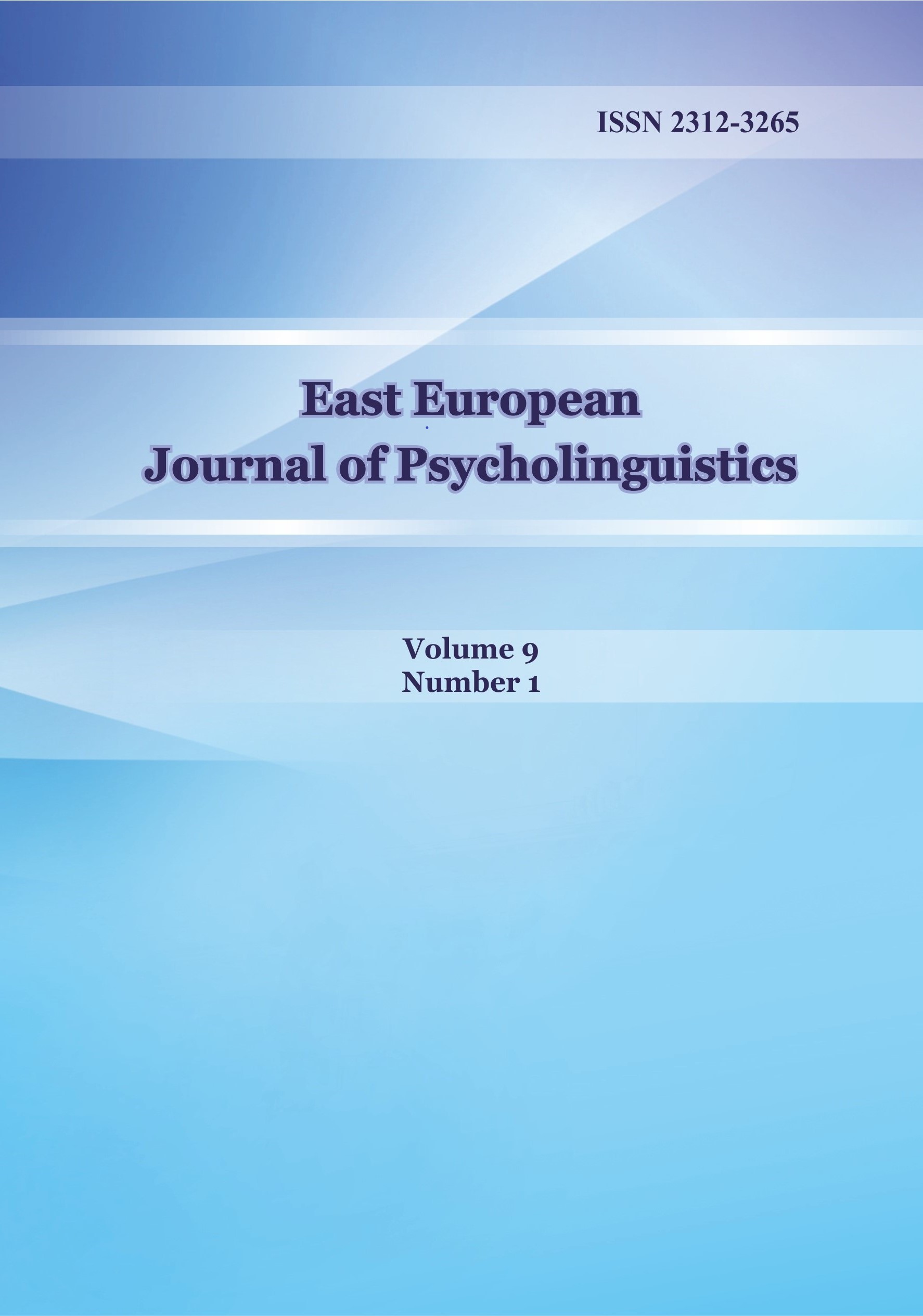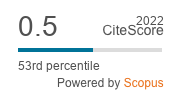Relationship Between Age and Lexical Access
DOI:
https://doi.org/10.29038/eejpl.2022.9.1.issKeywords:
inhibition, facilitation, reaction time, accuracyAbstract
Lexical access refers to the retrieval of the word considered to be appropriate from the lexicon. The related lexical items are assumed to be arranged in a specific pattern. When the related items are presented in succession, it may evoke facilitation or inhibition. When one lexical item facilitates the activation of other lexical items, the term facilitation is used. On the other hand, if one lexical item impedes the lexical activation of the other lexical items, the term inhibition is used. The study aimed to explore lexical-semantic activation patterns in younger and older adults. Continuous naming paradigm was employed to probe the lexical-semantic activation. 40 participants in the age range of 18-25 years; 40 individuals in the age range of 55-70 years served as participants after informed consent. The participants were divided into two groups based on age and they were asked to name pictures. A total of 120 pictures were used (60 related pictures and 60 unrelated pictures were used.). The stimulus was presented in 6 blocks. Each block had 10 semantically related pictures and 10 semantically unrelated pictures. The reaction time and accuracy of scores for related and unrelated pictures did not show statistically significant differences for younger individuals. A statistically significant difference between related and unrelated pictures was seen for older individuals, the reaction time was slower and accuracy was poorer for semantically related pictures. Greater reaction time and poor accuracy scores on semantically related pictures in this group suggested inhibition.
Downloads
References
Barr, D. J., Levy, R., Scheepers, C., & Tily, H. J. (2013). Random effects structure for confirmatory hypothesis testing: Keep it maximal. Journal of Memory and Language, 68(3), 255–278. https://doi.org/10.1016/j.jml.2012.11.001
Baayen, R. H., Davidson, D. J., & Bates, D. M. (2008). Mixed-effects modeling with crossed random effects for subjects and items. Journal of Memory and Language, 59(4), 390–412. https://doi.org/10.1016/j.jml.2007.12.005
Biegler, K. A., Crowther, J. E., & Martin, R. C (2008). Consequences of an inhibition deficit for word production and comprehension. Neuropsychology, Cognitive Sciences, 25, 493–527. https://doi.org/10.1080/02643290701862316
Belke, E. (2008). Effects of working memory load on lexical–semantic encoding in language production. Psychonomic Bulletin & Review, 15, 357–363. https://doi.org/10.3758/PBR.15.2.357
Brown, A. S. (1981). Inhibition in cued retrieval. Journal of Experimental Psychology: Human Learning and Memory, 7, 204–215.
Carroll, R., Warzybok, A., Kollmeier, B., & Ruigendijk, E. (2016). Age-related differences in lexical access relate to speech recognition in noise. Frontiers in Psychology, 7, 990. https://doi.org/10.3389/fpsyg.2016.00990
Damian, M. F., and Als, L. C. (2005). Long-lasting semantic context effects in the spoken production of object names. Journal of Experimental Psychology: Learning, Memory, and Cognition, 31, 1372–1384. https://doi.org/10.1037/0278-7393.31.6.1372
Issa, S. H., Awadh, F. H., & Ahmed, H. R. (2022). The role of proficiency level in the speed of lexical activation. Cogent Arts & Humanities, 9(1), 1999613. https://doi.org/10.1080/23311983.2021.1999613
Issa, S. H., Ahmed, H. R., Alwan, E. E., Mutahar, A. A., Bajiri, M. E., & Abhishek, B. P. (2021). An objective tool for classification of language deficits in adults. Review of International Geographical Education Online, 11(5), 4237-4246.
Kroll, J. F., Stewart, E. (1994). Category interference in translation and picture naming: Evidence for asymmetric connections between bilingual memory representations. Journal of Memory and Language, 33, 149–174. https://doi.org/10.1006/jmla.1994.1008
Levelt, W. J. M. (1989). Speaking: From intention to articulation ACL-MIT Press series in natural-language processing. Cambridge, MA, US: The MIT Press.
Navarrete, E., Del Prato, P., & Mahon, B. Z (2012) . Factors determining semantic facilitation and interference in the cyclic naming paradigm. Frontiers in Psychology, 3, 38. https://doi.org/10.3389/fpsyg.2012.00038
Rahman, A., R., & Melinger, A. (2007). When bees hamper the production of honey: Lexical interference from associates in speech production. Journal of Experimental Psychology: Learning, Memory, and Cognition, 33, 604–614. https://doi.org/10.1037/0278-7393.33.3.604
Downloads
Published
Issue
Section
License
Copyright (c) 2022 Saddam Issa, Abdulah Alfarhan, Fares Awadh, Abhishek Aradhya

This work is licensed under a Creative Commons Attribution 4.0 International License.











 Creative Commons «Attribution» 4.0
Creative Commons «Attribution» 4.0